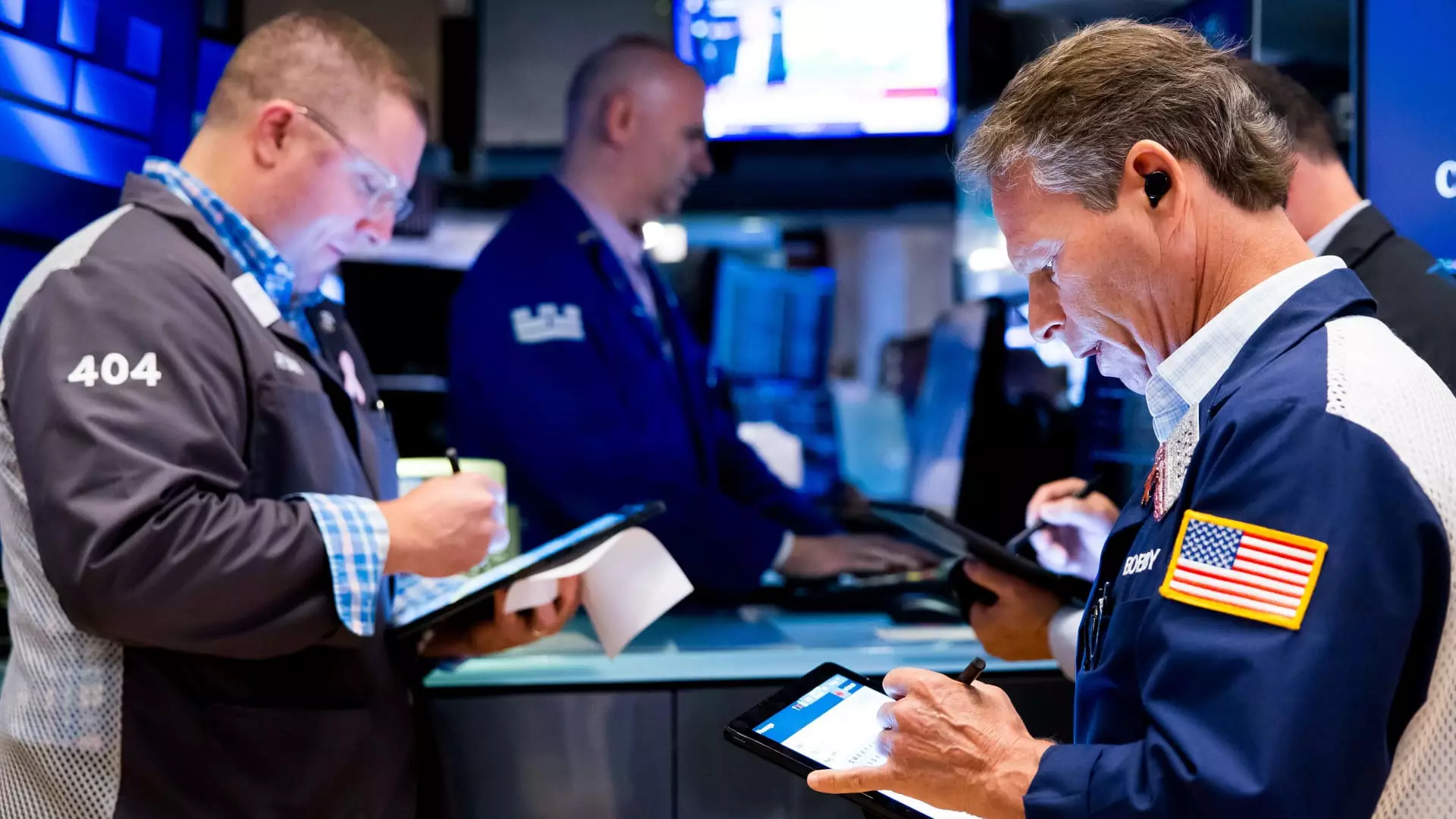The recent surge in U.S. stock markets—marked by new highs in the S&P 500 and Nasdaq—appears to signal unwavering economic strength. However, beneath this optimistic veneer lies a fragile facade. The rally, fueled by a surprisingly robust jobs report, masks the deeper vulnerabilities threatening long-term stability. While investors celebrate gains, it’s crucial to scrutinize whether these gains are justified or merely reflective of short-term optimism driven by transient data. The prevalent narrative of resilience risks becoming a dangerous illusion, especially when the foundational economic indicators tell a more complex story.
The employment data that ostensibly buoyed the markets shows a net increase of 147,000 jobs—more than economists anticipated. On the surface, this suggests a resilient economy defying geopolitical tensions and trade uncertainties. Yet, when viewed critically, these figures may be somewhat misleading. The May revision was only slightly higher, and the overall trend hides an unsettling decline in private payrolls the day prior, raising questions about the sustainability of economic growth. Are these figures reflective of genuine momentum, or are they manipulated by government narratives and market sentiment to maintain this illusion of strength? It’s imperative to approach these statistics with skepticism, recognizing that they are just part of a much more intricate picture.
The Risks of Overconfidence and Market Composition
While the markets soared, the underlying reality warrants caution. The Federal Reserve’s stance remains largely unchanged, with most traders discounting any imminent rate cuts despite economic signals that could justify a more accommodative policy. This polarized view—clinging to the idea of rates remaining steady—might temporarily boost investor confidence, but it obscures the risk of inflationary pressures and financial bubbles forming under the surface. The recent spike in Treasury yields correlates with the labor report, adding fuel to the debate that the economy might be overheating rather than cooling.
Furthermore, the market’s optimism is heavily influenced by political developments such as the U.S.-Vietnam trade agreement and the legislative progress on tax reform. These policy headlines diversify investor focus but also risk creating a false sense of certainty in an environment riddled with macroeconomic uncertainties and geopolitical volatility. The market’s upward trajectory, especially with record highs, should be a red flag for overexuberance—highlighting how detached equity valuation can become from actual economic health. What’s more alarming is how easily this illusion could crack if trade negotiations turn sour or if inflation ignites anew, exposing the market to sharp corrections.
The Political Arena and the Mirage of Stability
Navigating the political landscape, one can see how governmental actions—such as tariff negotiations and legislative maneuvers—serve as double-edged swords. The optimism surrounding recent policy advances risks glossing over the underlying tensions and potential volatility that they bring. The pending trade negotiations with China, the renewed focus on tariffs, and the legislative push for tax reform are all signs of an economic environment that remains highly sensitive to political whims.
This sensitivity is never more apparent than in the discussion surrounding tariffs and trade agreements. Market participants appear to project resilience, but it’s a fragile resilience built on assumptions that political standoffs will be resolved smoothly. History suggests otherwise; political conflicts tend to escalate and disrupt economic growth, often with unforeseen consequences. The current euphoria could easily give way to disappointment if trade tensions escalate or if regulatory policies shift unexpectedly.
The Central Bank’s Dilemma and the Perils of Complacency
The Federal Reserve faces an unenviable position—balancing the need to sustain economic growth with the risks of overheating and inflation. The current market confidence hinges on the assumption that rate hikes will be paused or slowed, but such complacency invites peril. Should inflation pressures intensify, the Fed’s inability to act swiftly could cripple future stability.
Market complacency is dangerously rooted in the belief that current policies and data guarantee ongoing growth. This is a fundamentally flawed perspective. Economic resilience isn’t an inherent trait; it is a fragile construct that can unravel as quickly as the shadows of uncertainty grow stronger. The recent rally, so heavily dependent on quantitative data and political optimism, could easily be overtaken by reality—one where economic vulnerabilities surface and swiftly erode investor confidence.
Ultimately, the current market behavior demands a skeptical lens. If history has taught us anything, it’s that prolonged periods of apparent strength often occur just before unforeseen shocks expose the underlying fragility. Recognizing this critical dynamic, investors and policymakers alike should brace for a reality that may be far less resilient than the markets’ record highs suggest.


Leave a Reply